Marine Paint, Boat Paint and Coatings
Marine Paint & Products For All Boat Paint Projects
-
1 PART FLATTENING AGENT QUART FOR RESALE IN CANADA ONLY
$64.14$59.01:Order over $500? Apply for Financing$65.45Apply Now >> -
1010 FLAT.AGENT FOR TOPCOAT-QT
Price range: $108.28 through $324.37
Price range: $99.62 through $298.42:Order over $500? Apply for Financing$147.83Apply Now >> -
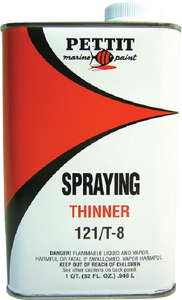
121/T-8 SPRAYING THINNER-QUART
$45.38$41.75:Order over $500? Apply for Financing$46.31Apply Now >> -
ACCELERATOR 501 4OZ.
$64.38$59.23:Order over $500? Apply for Financing$65.69Apply Now >> -
ACCELERATOR FOR 302 PT
$76.23$70.13:Order over $500? Apply for Financing$77.79Apply Now >> -
ACCELERATOR FOR 442 PT .
$78.59$72.30:Order over $500? Apply for Financing$80.19Apply Now >> -

Alexseal 501 Topcoat Infinity Blue – GALLON)
$701.29$645.19 Order over $500? Apply for FinancingApply Now >> -

Alexseal Premium Topcoat 501, Sea Foam Green, Qt.
$281.30$258.80 Order over $500? Apply for FinancingApply Now >> -
AQUAGARD A/F RED QUART (90002) PMG
Price range: $94.57 through $536.42
Price range: $87.00 through $493.51:Order over $500? Apply for Financing$72.79Apply Now >> -
AQUAGARD PRIMER 190 W/BASED QT PMG
Price range: $63.50 through $183.94
Price range: $58.42 through $169.22:Order over $500? Apply for Financing$48.85Apply Now >> -
AWL SPAR VARNISH REDUCER-QUART
Price range: $49.96 through $87.21
Price range: $45.96 through $80.23:Order over $500? Apply for Financing$65.65Apply Now >> -
AWLCAT #2 STANDARD CONVERTER PINT
Price range: $112.26 through $541.03
Price range: $103.28 through $497.75:Order over $500? Apply for Financing$149.23Apply Now >> -
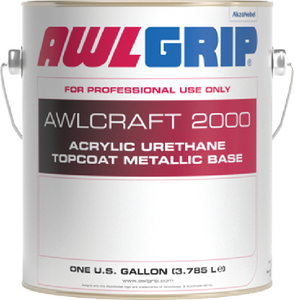
AWLCRAFT 2000 CLEAR – QT
$128.96$118.64:Order over $500? Apply for Financing$131.59Apply Now >> -
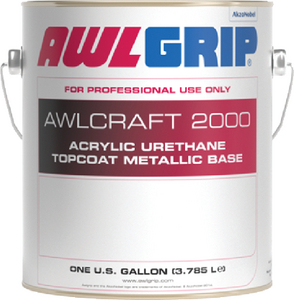
AWLCRAFT 2000 CLOUD WHITE – GL
$495.18$455.57:Order over $500? Apply for Financing$505.29Apply Now >> -
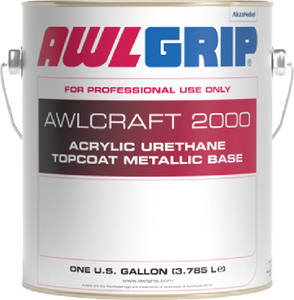
AWLCRAFT 2000 OFF WHITE – GL
$495.18$455.57:Order over $500? Apply for Financing$505.29Apply Now >> -
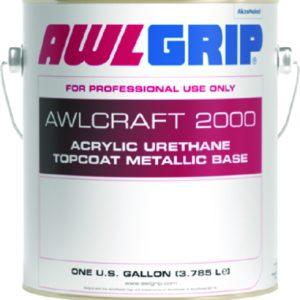
Awlcraft 2000, Matterhorn White, Gal.
$495.18$455.57:Order over $500? Apply for Financing$505.29Apply Now >> -
AWLGRIP 2/AWLBRITE ACT.-PINT SLOW/BRUSH
Price range: $65.72 through $511.55
Price range: $60.46 through $470.63:Order over $500? Apply for Financing$87.91Apply Now >> -
AWLGRIP 545 EPX PRM CONVRTR-QT
Price range: $90.99 through $288.18
Price range: $83.71 through $265.13:Order over $500? Apply for Financing$122.07Apply Now >> -
AWLGRIP HDT CLEARCOAT BASE REPLACES P/N 98-OC03001G
$685.99$631.11:Order over $500? Apply for Financing$699.99Apply Now >> -
AWLGRIP HDT FAST ACTIVATOR QT REPLACES P/N 98-OA0020Q
Price range: $68.71 through $753.70
Price range: $63.21 through $693.40:Order over $500? Apply for Financing$95.89Apply Now >> -
AWLGRIP REPAIR BASECOAT BLENDR
$104.16$95.83:Order over $500? Apply for Financing$106.29Apply Now >> -
AWLGRIP REPAIR BASECOAT FOUNDATION COAT
$111.25$102.35:Order over $500? Apply for Financing$113.52Apply Now >> -
AWLGRIP REPAIR TOPCOAT BLENDER
$188.15$173.10:Order over $500? Apply for Financing$191.99Apply Now >> -
AWLPREP 400 SOLVENT -GALLON ZZ
Price range: $102.11 through $126.91
Price range: $93.94 through $116.76:Order over $500? Apply for Financing$137.05Apply Now >>
Some Paints/Paint Containers are classified as “Dangerous Goods” with respect to shipping therefore, shipping rates for these particular products may require additional shipping charges not evident during checkout. A representative will contact you following your order if any products in your shipment will require additional “DG” shipping charges.
Marine Paint Coatings & Supplies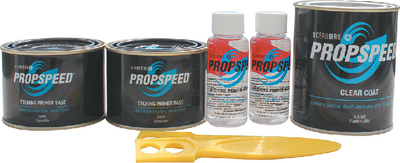
We have a wide assortment of marine paint. Our extensive selection includes topside paint, bottom paint, boat engine paint, non-skid paint, anti-fouling paint and primers. We also carry thinners and solvents. Because of our huge selection, you would be hard pressed to not find what you need to complete any conceivable marine paint project.
Know Your Boat Paint & Coatings
Each type of marine paint serves a specific purpose. In addition to its aesthetic appeal, colourful topside paint protects surfaces against damage due to UV light, salt and spray. Bottom paint, also sometimes called anti-fouling paint, prevents the growth of fouling organisms. This makes a boat’s hull faster and more fuel efficient. Engine paint protects an engine’s iron and metal surfaces against rust and corrosion. Non-skid deck paint protects the underlying surface and helps to prevent passengers from taking an unplanned swim. Most topside paints and some bottom paints require a marine primer to ensure proper bonding. In addition to choosing a the right primer for your paint, some paints require a thinner or solvent to be added for cleaning up, or to modify its properties when brushed, sprayed or rolled.
Getting Ready to Paint Your Boat? See Our Marine Paint Tips Below
Today’s marine paints have become much more sophisticated compared to the past when they weren’t much more than ground up pigment mixed with oil and thinner. Marine paint is now brighter and more durable than it used to be. To get the most out of the paint you select, be sure to closely follow the manufacturer’s instructions for surface preparation, which you will find on the paint can’s label. To ensure that your project goes off without a hitch, make sure you have everything you need to complete the job BEFORE you begin. This includes the correct thinners and/or solvents, sandpaper sheets or discs, a supply of rags and protective equipment & clothing.
Marine Paint / Boat Paint Tips
After several years in the water your boat paint begins to crack and fade giving you two choices – hire a professional boat painter to paint it or do it yourself.
Painting a boat takes a lot of time and effort, from preparing the hull to sourcing right the paint, but anyone can do it with a little basic equipment and a few days to do it.
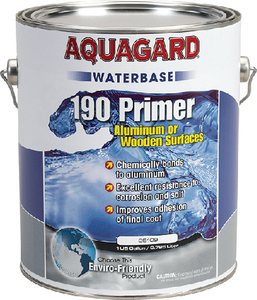
Preparation of the Painted Surface – Boat Paint Tips 1
1. Thoroughly clean the boat making sure to get everything off of the surface, from dirt & sand to marine life and seaweed. Generally, it’s easier to clean the painted surfaces of the boat as you remove it from the water. Use a high-pressure water sprayer, a paint scraper, and some clean rags.
2. Remove all hardware from the boat paint areas. You want to remove as much as possible.
– Anything that can’t be removed should be covered with painter’s tape to keep it clean and to prevent it from getting painted.
3. Use solvent to remove the waxy coating from the boat paint surfaces. If you can feel a greasy, waxy finish on your boat you will need to remove it before painting it. Using rough sponges and boat paint solvents to scrub away the waxy finish.
– Running your fingers along the surface should indicate if there is still a coating – it’ll feel like a candle or a freshly waxed car.
– If you are in doubt about the coating, repeat the solvent scrub again – paint won’t adhere properly to a waxy surface, so it all needs to go.
4. Next, make all necessary repairs to the boat paint surface. Fill in any nicks, cracks, and corrosion before you start painting to prevent pitting or imperfections in the finished paint job.
– Make sure to fill in any holes with marine-grade epoxy.
5. Sand the boat paint surface thoroughly. Use 80-grit sandpaper and a random-orbit or finishing sander to sand the entire painted surface of the boat. This gives the paint a surface to “grip” to and promotes an even coat of paint. When in doubt, sand away all of the old paint. There are several important considerations to take when sanding:
– If the old paint is flaking, gouged or otherwise damaged you will need to strip it and sand it away completely.
– If the old paint is a different type than the one you plan to apply (ie. non-vinyl vs. vinyl paint), then you’ll have to remove it completely.
– Never use a belt sander on your boat paint surfaces
– Safety Tip: wear a respirator and safety glasses when sanding, as paint dust & chips are toxic.
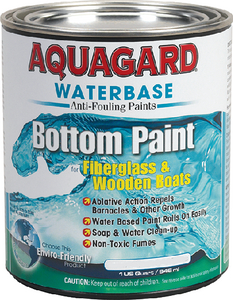
Painting Your Boat – Boat Paint Tips 2
1. Try to do the painting on a cool, dry day for best results. You don’t want it to be too hot, humid, or windy because it could ruin your paint job. If possible, paint your boat on a day when it’s around 15-25 degrees Celsius and about 60% humidity.
– If you can, paint your boat in a covered area.
2. Choose the right paint for your boat. There are a lot of different paints on the market – from gel coats and enamels to complex two-step paint mixes. If you’re painting your own boat, the best “bang for your buck” is probably a one-step polyurethane paint.
– Two step polyurethane paint is longer lasting but takes precise mixing and application techniques to do it properly.
– Most gel coats, other than very expensive, high-end options, will fade in only 1-2 years.
3. Apply 1-2 full coats of primer and make sure your primer is compatible with your paint by reading the labels on both products’ cans. Primer will help the paint bond with your boat and helps prevent cracking and bubbling.
– After the first coat has dried, gently sand the paint with 300-grit sandpaper, then apply another coat.
4. Paint the boat using a small roller and brush. You’ll want to work quickly, using the roller to paint from the bottom of the boat up. Perform most of the work with the roller and use the brush to get smaller areas after you’ve done all you can with the roller.
5. Gently sand the paint after it has dried. It can take anywhere from an hour to a day for the paint to dry. Gently sand the paint with 300-grit sandpaper. This will remove spots, blemishes, or bubbles.
6. Apply 2-3 more coats of paint. Sand the boat gently with 300-grit sandpaper after each coat has dried. Although it takes time and effort, 2-3 coats of paint will ensure your boat paint won’t fade or crack for years to come.
Some Paints/Paint Containers are classified as “Dangerous Goods” with respect to shipping therefore, shipping rates for these particular products may require additional shipping charges not evident during checkout. A representative will contact you following your order if any products in your shipment will require additional “DG” shipping charges.
















